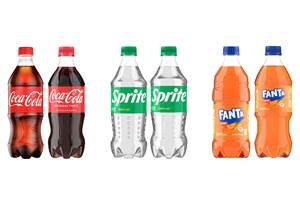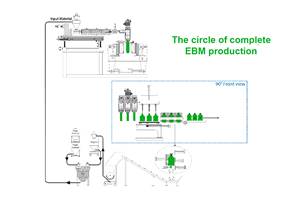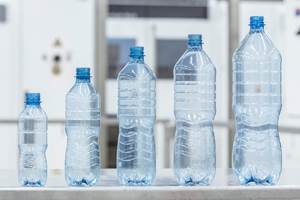Wood On Plastics: Packaging: Growth Leader in 2011
Each quarter, the SPI’s Committee on Equipment Statistics and Processors’ Council survey their respective members and ask them to forecast future growth for the major end-markets for plastics.
Each quarter, the SPI’s Committee on Equipment Statistics and Processors’ Council survey their respective members and ask them to forecast future growth for the major end-markets for plastics. The detailed results from these surveys are usually available only to the groups’ member companies, but I can report that the end-market that has consistently ranked at the top of the list (usually by a wide margin) in recent quarters is packaging.
This will come as no surprise to readers of this magazine, or really to anybody who is involved in the plastics industry. Stories about the positive developments in plastics packaging are being reported at a furious and accelerating frequency. Of course, so are the negative stories about problems involving bans on products such as plastic bags, BPA, and PVC.
For most consumers, packaging represents their closest and most frequent interaction with the plastics industry. Durable goods such as automobiles, electronics, and appliances may be the sexiest markets and grab the biggest headlines, but it is non-durable goods—food, beverages, shampoos, soaps, detergents, and medications—that most affect our daily lives. Even in uncertain economic times like these, the packaging industry is widely considered the sector that will enjoy the strongest growth in coming months.
Economic data corroborate this forecast. Because plastics packaging is such a large and diverse sector, it is necessary to analyze more than one data series in order to get a sense of the trend in overall market demand. A couple of readily available data series have historically demonstrated a close correlation with packaging demand.
One of these is the growth in total U.S. retail sales, minus autos. So far in 2010, the gain in total retail sales has been about 6%. Receipts for food, beverage, and health and beauty products have grown at a solid pace, but one of the fastest growing segments this year has been electronic shopping and mail-order houses. So for a growing number of retail products, packaging needs are increasingly driven by shipping issues such as weight and protection from damage during handling, and are less focused on “shelf appeal.”
Another data series that demonstrates the direction of the tide in consumer demand for packaged products is the quarterly series that measures total profits in the food and kindred products industries. Total real consumer spending on food and beverage products is not very volatile, and it has expanded an average rate of 1% to 2% annually over the past 10 years. But since the middle of the last decade, the rate of growth in profits for this industry has been better than 6% a year on average.
It is particularly impressive how quickly profit levels in the food industry have recovered after the recent recession and despite rising energy costs. One of the primary reasons for this robust profit growth has been advances in food packaging technology during this time. Profit levels ultimately drive research, innovation, marketing, and investment in products, and plastics packaging products have been an important part of some of the biggest developments in the food industry in recent years. Business owners and managers are taught to follow the money, and there should be little wonder why recent survey respondents have been optimistic about the future of market demand for plastics packaging.
WHAT IT MEANS TO YOU
- Sustainability and being “green” are still driving concepts in the marketing and packaging strategies for most consumer non-durable products.
- Rising prices of feedstocks and finished materials have made the idea of recycling economical once again. Plastics packaging products are on the front line of the burgeoning recycling debate.
- Be assured that the time is rapidly approaching when it will no longer be economically viable to use petrochemical feedstocks for packaging applications.
About the Author
Bill Wood, an economist specializing in the plastics industry, heads up Mountaintop Economics & Research, Inc. in Greenfield, Mass. Contact BillWood@PlasticsEconomics.com.
Related Content
Multilayer Solutions to Challenges in Blow Molding with PCR
For extrusion blow molders, challenges of price and availability of postconsumer recycled resins can be addressed with a variety of multilayer technologies, which also offer solutions to issues with color, processability, mechanical properties and chemical migration in PCR materials.
Read MoreCoca-Cola’s Redesign of Small PET Bottles Pushes Lightweighting Below Prior ‘Floor’
Coca-Cola thought it had reached the limits of lightweighting for its small PET carbonated soft drink bottles. But a “complete redesign” led to a further 12% reduction.
Read MoreGet Color Changes Right In Extrusion Blow Molding
Follow these best practices to minimize loss of time, material and labor during color changes in molding containers from bottles to jerrycans. The authors explore what this means for each step of the process, from raw-material infeed to handling and reprocessing tails and trim.
Read MoreFirst Water Bottles With Ultrathin Glass Coating
Long used for sensitive juices and carbonated soft drinks, KHS Freshsafe PET Plasmax vapor-deposited glass coating is now providing freshness and flavor protection for PET mineral water bottles.
Read MoreRead Next
For PLASTICS' CEO Seaholm, NPE to Shine Light on Sustainability Successes
With advocacy, communication and sustainability as three main pillars, Seaholm leads a trade association to NPE that ‘is more active today than we have ever been.’
Read MoreBeyond Prototypes: 8 Ways the Plastics Industry Is Using 3D Printing
Plastics processors are finding applications for 3D printing around the plant and across the supply chain. Here are 8 examples to look for at NPE2024.
Read More








